Excerpts from an original article by Rebecca John at DeSmog.
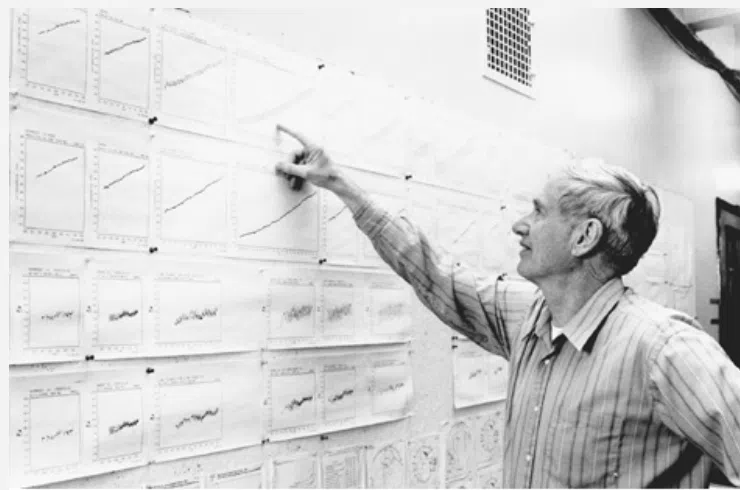
Documents shed light on the earliest-known instance of climate science funded by the fossil fuel industry, adding to growing understanding of Big Oil’s knowledge of climate change.
In 1955 in the wilds of Big Sur, a young Caltech researcher named Charles David Keeling gathered carbon dioxide samples among Northern California’s towering redwoods. Crawling out of his sleeping bag several times a night on research trips conducted over the course of 18 months, from January 1955 to June 1956, Keeling measured background levels of carbon dioxide across the western United States — at Big Sur, but also at desert and high mountain stations, in forests and grassland, above the city of Los Angeles, and over the waters of the Pacific Ocean.
Keeling’s findings would lead him to conduct a separate series of experiments from the top of the Hawaiian volcano Mauna Loa resulting in the famous Keeling Curve — a visual depiction of rising atmospheric carbon dioxide (CO2) caused by the burning of fossil fuels. His work underpins our understanding of manmade climate change.
…
By December 1954, the Air Pollution Foundation had approved an allocation of $13,814 (approximately $158,000 in today’s money) to fund Keeling’s earliest CO2 investigations.
These never-before-seen documents from the Caltech Archives and the U.S. National Archives, along with material from the Charles David Keeling papers at the University of California, San Diego, and local Los Angeles newspapers from the 1950s, establish the Air Pollution Foundation’s sponsorship of Keeling’s research at Caltech as the earliest-known instance of climate science funded by the fossil fuel industry. It’s possible it was also the first time that the oil industry was directly informed about CO2-induced climate change — five years before physicist Edward Teller warned the API of the disruptive consequences of burning fossil fuels.
Fossil Fuel Fingerprints
Carbon atoms contain a combination of the isotopes carbon-12 (C12), carbon-13 (C13), and carbon-14 (C14). Carbon atoms from fossil fuels, however, contain relatively little C13 and almost no C14, which is radioactive and decays over time.
In the 1940s and early 1950s, a carbon isotope scientific revolution was underway in the United States. Scientists had learned that they could measure the different ratios of carbon isotopes in materials to accurately determine the age of ancient objects: carbon dating. By analyzing the isotopic fingerprint of carbon atoms in tree rings, scientists could also identify whether the carbon dioxide absorbed by trees through photosynthesis had been produced naturally or as a result of burning fossil fuels. And, by measuring the isotopic ratios in tree rings of various ages, researchers could also estimate how far CO2 concentrations had risen since the Industrial Revolution as a result of burning fossil fuels.
In a proposal sent to the Air Pollution Foundation in November 1954, Keeling’s research director Epstein wrote, “It is clear that several factors contribute to the variations in the isotopic composition of carbon in trees.” Among these factors, Epstein explained, were the various ecological conditions under which the tree grew, including the isotopic composition of the carbon in the atmosphere. “Since 1840, the carbon-isotope ratio (C12/C13) has increased in the trees so far investigated,” he continued — an increase which could be explained by a change in the carbon-isotope ratio in atmospheric carbon dioxide “resulting from the burning of the C12-enriched coal and petroleum.”
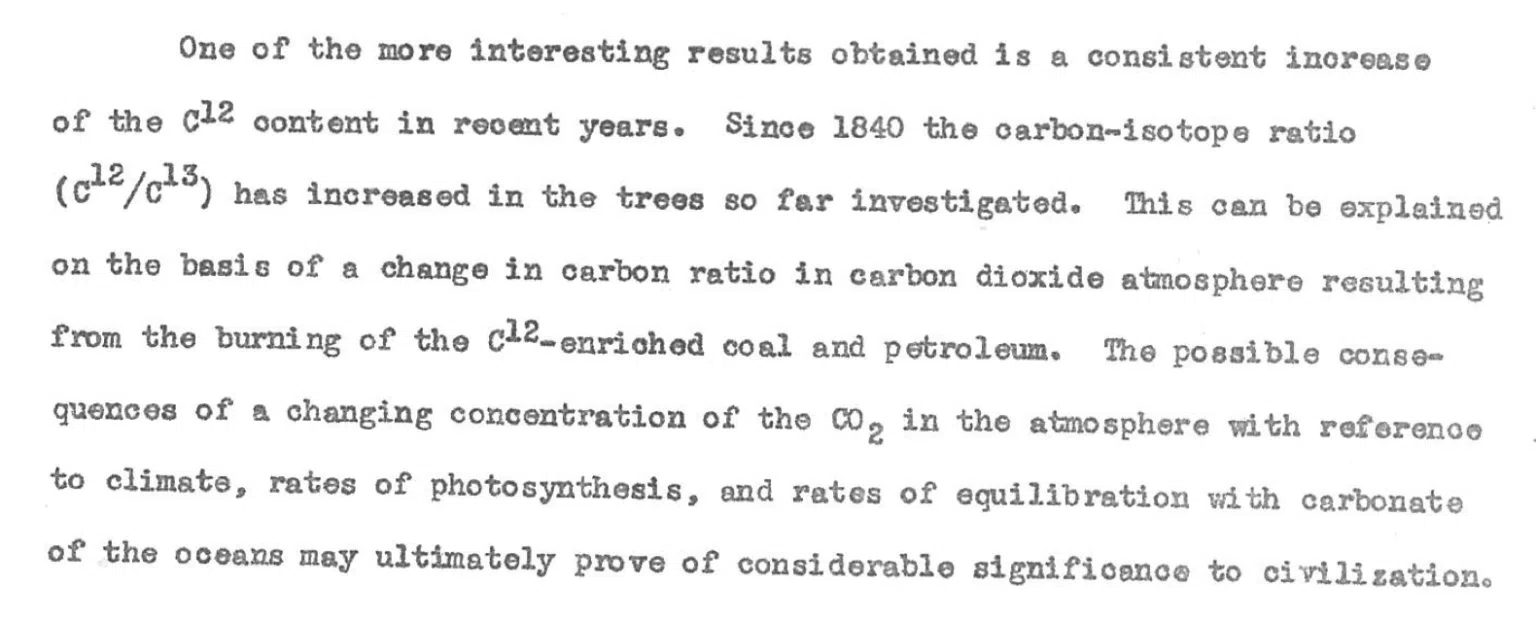
Epstein’s research proposal for the Air Pollution Foundation left no doubt about the potential significance of this research. Approximately sixty years before the Paris Agreement, he described the “concentration of CO2 in the atmosphere” as a matter “of well recognized importance to our civilization” and explained that the possible consequences of “a changing concentration of the CO2 in the atmosphere with reference to climate” may “ultimately prove of considerable significance to civilization.”
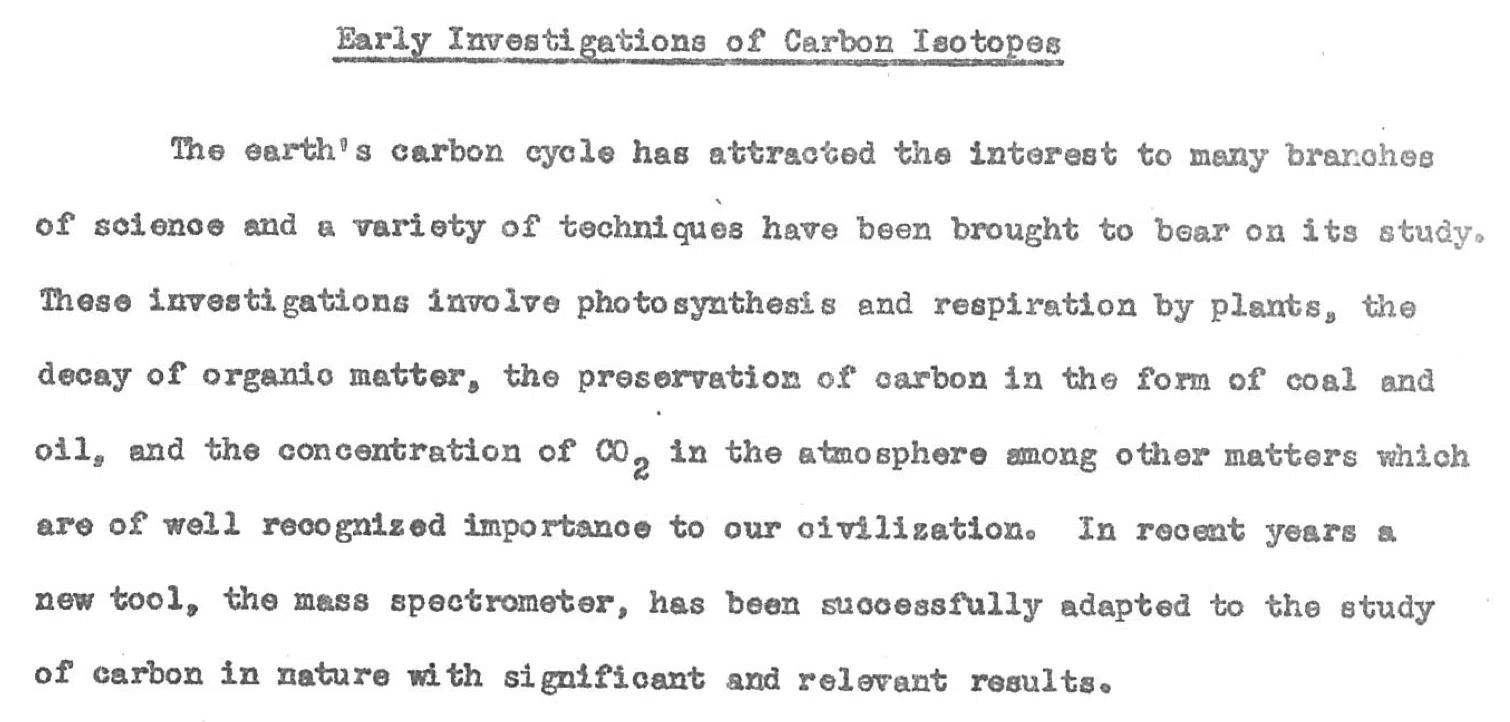
…
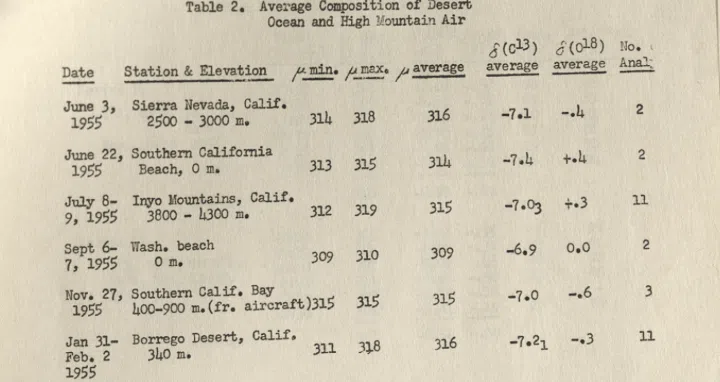
Ahead of the Keeling Curve
Confident in the accuracy of his measurements, Keeling communicated his findings to an employee of the U.S. Weather Bureau and, in the summer of 1956, its director of meteorological research, Harry Wexler, invited him to Washington, D.C., to present his data. Impressed, Wexler suggested that the young researcher continue his investigations by measuring CO2 at the newly built observatory on the Hawaiian volcano Mauna Loa. Keeling secured federal sponsorship for this work and measured atmospheric CO2 on Mauna Loa, observing a rising trend of CO2 increasing year on year from approximately 313 ppm in 1957 to 320 ppm in 1967. Caused primarily by the burning of fossil fuels, the depiction of this trend would come to be known as the Keeling Curve — a key piece of evidence that climate change is human caused.
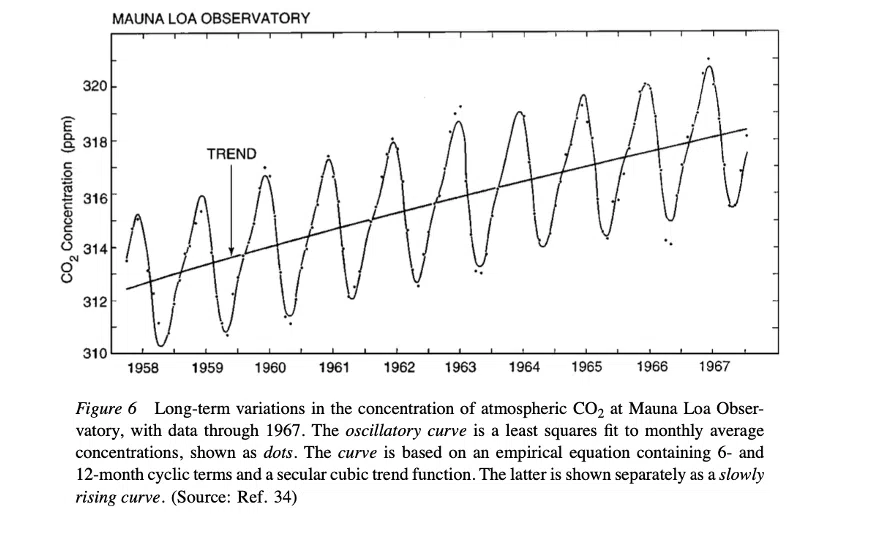
…
Excerpts from an original article by Rebecca John at DeSmog.